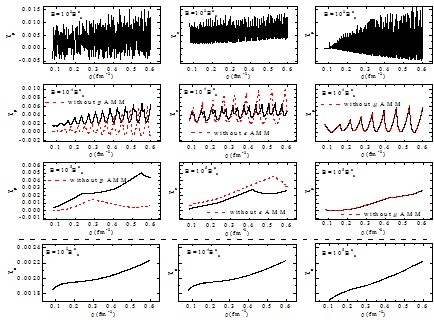The properties of dense nuclear matter play a crucial role in understanding a variety of issues in astrophysics, such as the neutron star structure and properties. One of the most important features of neutron stars is their strong magnetic field. In addition, the strong magneticfields are also expected to be created in heavy-ion collisions. Therefore, much attention has been paid to the properties of dense matter in strong magnetic fields.
Researchers in Theoretical Physics Group at Institute of Modern Physics, Chinese Academy of Sciences (IMP) investigated the magnetization of neutron star matter in the presence of a strong magnetic field by adopting the FSUGold interactions and including the anomalous magnetic moments (AMM).
The result found that the magnetic susceptibilities of the neutron is not dominant, indicating the neutron star matter can not be treated as the pure neutron matter for simplicity when one studies its magnetization.
In addition to, the small electron magnetic susceptibility indicates the observed super-strong magnetic field of neutron stars does not originate from the induced Pauli paramagnetism of the highly degenerate relativistic electron gas in the neutron star interiors. The proton and electron AMM affect their respective magnetic susceptibility evidently, whereas the effect of the muon AMM can be neglected completely. The role of the AMM of the neutron, proton and electron suggested they can not be discarded arbitrarily;
Besides, the magnetization of neutron star matter can be very large, which differs from the conclusion in Ref. [A. Broderick, M. Prakash, and J. M. Lattimer, Astrophys. J. 537, 351 (2000)]. The calculation in this Reference was correct, but it did not include the case of the very low magnetic fields so that it concluded the magnetic susceptibility is only a few percent. The magnetization is perhaps related to the origin of the strong magnetic field in neutron stars, but it needs to be explored further; the magnetization of neutron star matter is affected distinctly by the density-dependent symmetry energy.
The work has been published in Phys. Rev. D 87, 103010 (2013)

Fig.1 Magnetic susceptibilities of each component of neutron star matter. (Image by IMP)

